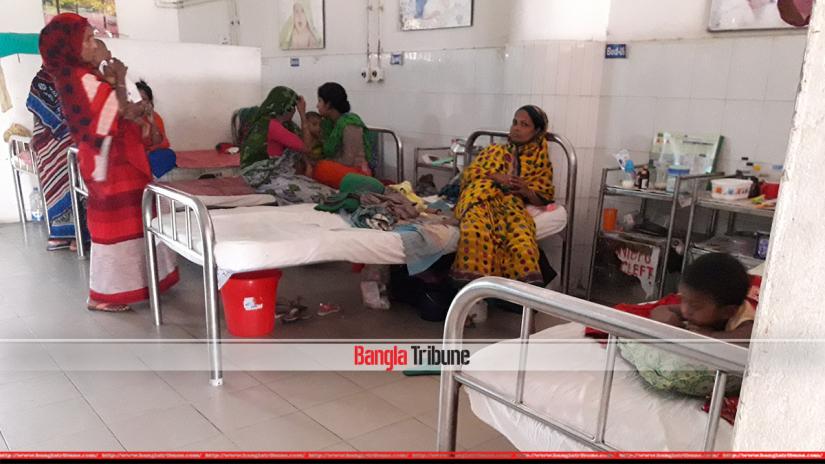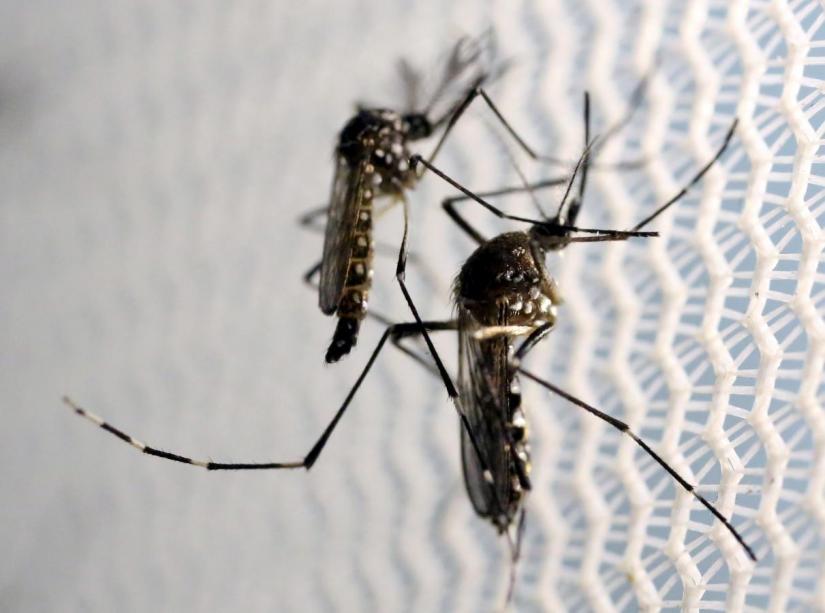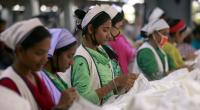 Breaking the previous record in the total count, the numbers of dengue patients were reported to have nearly doubled in the last five months of the year compared to that in the same period last year.
Breaking the previous record in the total count, the numbers of dengue patients were reported to have nearly doubled in the last five months of the year compared to that in the same period last year.
According to the Health Emergency Operation Centre and Control Room of the Directorate General of Health Services (DGHS), a total of 249 dengue patients were reported from different hospitals in Dhaka till May. Of them, two died.
As of Monday (Jun 17), the total jumped to 558 dengue patients, with 309 reporting the virus in less than a month.
Last year the numbers of dengue patients were nearly half of this year at 295 in June where three people lost their lives in their battle with the virus.
Dr Ayesha Akther, assistant director of the control room of DGHS said: “the cases of dengue are likely to increase during the rainy season from July to August.
“However climate change has contributed to erratic weather when it now rains in December and we also see cases of dengue then.”
She said to look out for symptoms such as high rise temperature (more than 104-degree Fahrenheit), severe headache, pain behind the eyes, nausea, vomiting, swollen glands, muscle and joint pain and rashes.
She advises not to self medicate, adding: “It is better to consult a physician as soon as some of these symptoms arise preferably in the first three days.”
In 2018, some 26 patients died out of 10,148, who were admitted with the mosquito-borne disease. Till May 2018, 133 patients got admitted and till June 2018, 295 dengue patients were admitted in different hospitals and three among them died. In 2017, it was eight dead out of 2,769 patients, while in 2016 it was 14 out of 6,060, and in 2015 the figure was six out of 3,162. However, no one was reported dead out of 375 hospitalized patients in 2014.
The previous high was 6,232 dengue cases confirmed in 2002.
Prof Sanya Tahmina, director of the Disease Control unit of DGHS, said citizens have to be more aware of mosquito-borne diseases. “Mosquito breeding grounds need to be destroyed,” she said.
Dengue patients have to drink lots of water and those attacked by this fever for the second time should remain under the supervision of a physician, the director said.
In a press release issued on May 11, the disease control unit of DGHS informed people about its various programs to create awareness.
It said every year the disease control unit conducts three Aedes Aegypti mosquito population surveys and also requests city corporations to take necessary action.
In the current year, they also arranged 10 public meetings in 10 zones of both the city corporations to build awareness of city dwellers with the help of ward councillors, teachers, and NGO representatives.
They have also provided dengue and chikungunya management training to some 1,200 doctors and nurses.
 Dhaka areas perfect breeding ground
Dhaka areas perfect breeding ground
The Disease Control Division of DGHS conducted a survey of about one hundred sites in 97 wards of both the city corporations. They also visited 998 homes for this survey.
The survey, between Mar 3 and 12, found high population density in many areas of Dhaka North City Corporation (DNCC) and Dhaka South City Corporation (DSCC) making those areas perfect breeding grounds for the Aedes mosquito.
These areas are potential breeding grounds for mosquitoes as there are flooded floors all around and plastic buckets, discarded tyres, plastic drums, flower tubs, clay pots, water tanks, paint pots, plastic mugs, and metal buckets, left here and there.
To determine populations of adult Aedes Aegypti, this year the organization used the BG-Sentinel trap-2, worldwide mosquito surveillance and monitoring device. 141 traps were installed in 19 wards of both the city corporations. Every trap detected 0.55% Aedes Aegypti and 46.7 percent of the Culex mosquito.
In DNCC, highest counts of 40 BI (Breteau index) were found in ward no 35, while 30 BI was found in ward no 1, 4, and 19, and 20 BI was found in ward no 16, 22, and 23.


